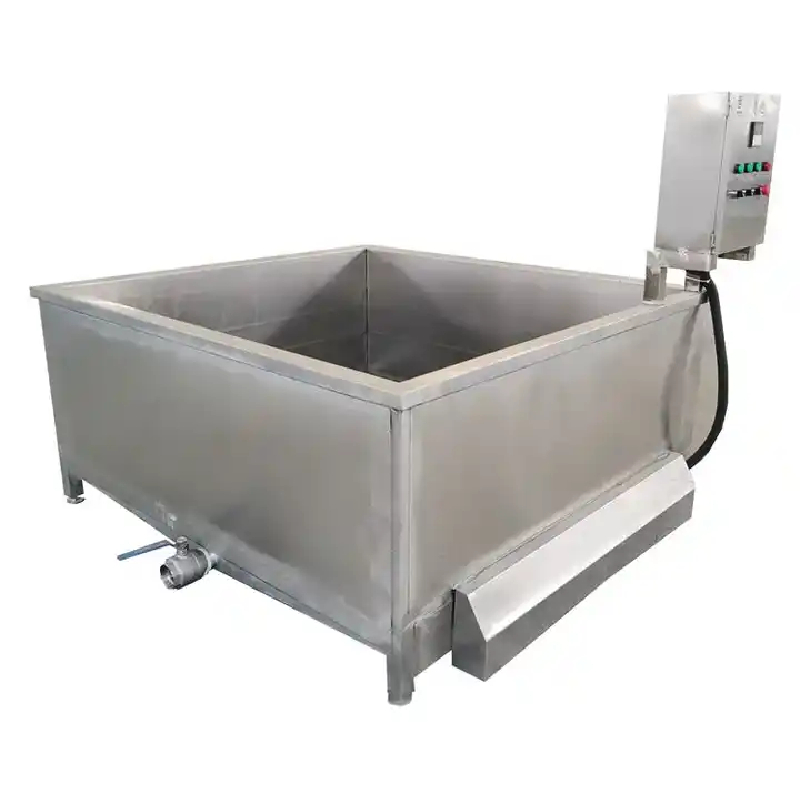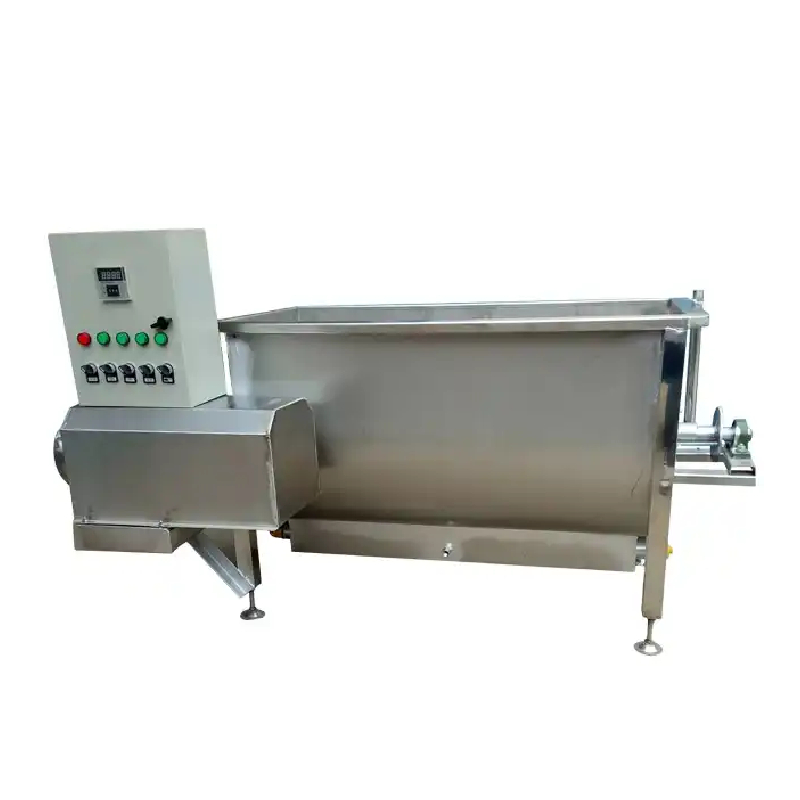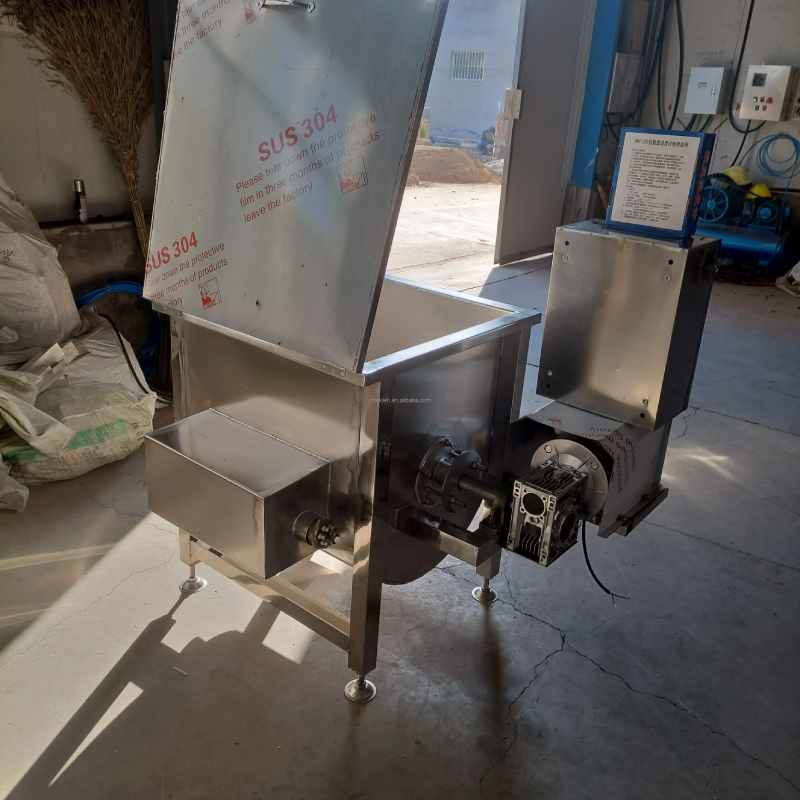Scalding Tank for Poultry—Precise Temp, Stainless—Why Buy?
Oct . 10, 2025 11:40 Back to list
Scalding Tank for Poultry—Precise Temp, Stainless—Why Buy?
Semi Automatic Poultry Scalding Tank: Field Notes, Specs, and Real-World Buying Advice
If you run a small to mid-size poultry line, the scalding tank is the quiet workhorse that makes plucking fast, consistent, and frankly less stressful on a busy day. I’ve toured family plants and co-ops where a solid scald determines whether the defeathering line hums or jams. This Semi Automatic poultry scalding tank—designed in Jinwang Western Street, Anping County, Hengshui, Hebei, China—targets exactly that gap: reliable, controllable heat; easy cleaning; sane maintenance.

What’s happening in the market (and why it matters)
Trends are clear: tighter hygiene controls, smarter energy use, and semi-automation that doesn’t bankrupt a small processor. Many customers say they’re upgrading legacy open vats for better temperature stability and easier washdowns. Honestly, it’s overdue. Regulators keep nudging plants toward verifiable controls and cleaner welds, and buyers want equipment that plays nicely with HACCP records.

Core applications
Designed for chicken, duck, goose, and quail lines. Typical users include township slaughterhouses, farm co-ops, boutique processors, and R&D pilot plants testing defeathering parameters. In fact, a stable scalding tank lets you run (for example) 50–60°C soft scalds for premium skin presentation or 60–64°C hard scalds when throughput matters more than cosmetic perfection—subject to local regulations, of course.

Technical snapshot
| Model | Semi Automatic poultry scalding tank (chicken/duck/goose/quail) |
| Tank material | SUS304 stainless steel, food-contact welds; polished inner surface |
| Capacity | ≈ 300–800 L (custom sizes on request) |
| Heating | Electric elements (optional steam coil) |
| Temp control | Digital PID, ±1°C stability in typical conditions |
| Power | ≈ 9–18 kW (varies by capacity) |
| Insulation | Double-wall with mineral insulation to reduce heat loss |
| Ingress / safety | IP54 control box, E-stop, over-temp cutout |

Process flow and testing (how it’s used day-to-day)
Materials: food-grade SUS304, heat-resistant gaskets, food-safe sealants. Methods: preheat to target, immerse carcasses in baskets/frames, agitate manually or with optional paddles, then transfer to plucker. Internal QA typically checks temperature uniformity at three depths; real-world variation ≈ ±0.8–1.5°C. For hygiene, operators rotate water, skim fats, and follow CIP-style rinse with 80–85°C hot water after shift.
Testing standards and references: plants often align with HACCP plans, EU 853/2004 hygiene rules, USDA FSIS guidance on scalding and antimicrobial controls. Service life? With routine descaling and gasket replacement, users report 6–10 years—longer in low-salinity water.

Advantages we’ve observed
- Stable heat equals cleaner pluck, fewer pinfeathers.
- Easy-to-wash welds; fewer harborage points than many legacy vats.
- Semi-automatic control without overcomplicating the panel—nice balance.
- Customization: size, heating method, baskets, drain position, even caster type.

Vendor comparison (quick buyer’s guide)
| Vendor | Heating | Controls | Customization | Lead time |
|---|---|---|---|---|
| Yize Machine (Hebei) | Electric / optional steam | PID, over-temp cutout | High (dimensions, baskets, drains) | ≈ 15–30 days |
| Vendor B (imported) | Steam only | PLC; pricier service | Medium | ≈ 6–10 weeks |
| Vendor C (local fab) | Electric | Analog dial | Low–Medium | ≈ 3–5 weeks |

Case notes and feedback
One Hebei co-op running 400–600 birds/day reported a 12–18% drop in rework after switching to this scalding tank, mostly from tighter temperature control. Another shop handling ducks liked the sturdier drain and the fact that steam-option units cut their electric bill—though they admitted it took a week to dial in their soft scald profile.

Compliance and documentation
Typically supplied with material certificates for SUS304, electrical diagrams referencing IEC/EN 60204-1 basics, and support for HACCP documentation. CE/ISO paperwork available on request—ask to see samples. Always validate scalding parameters under your local rules.

Final thoughts (and where it’s built)
Made in Anping County, Hengshui City, Hebei, China, this scalding tank suits processors who want dependable controls and straightforward cleaning without a huge learning curve. Not flashy. But effective—actually the point in poultry.
Authoritative citations
- USDA FSIS, Poultry Slaughter Inspection & HACCP Guidance: https://www.fsis.usda.gov
- EU Regulation (EC) No 853/2004 on hygiene of food of animal origin: https://eur-lex.europa.eu
- FAO, Small-scale Poultry Processing: https://www.fao.org/3/t0561e/t0561e00.htm
- EHEDG Guidelines on Hygienic Equipment Design: https://www.ehedg.org
-
Efficient & Sustainable Chick Brooding Cage Systems for Modern Poultry Farming
NewsNov.24,2025
-
Cage for Chick: Optimizing Poultry Care for Global Food Security
NewsNov.23,2025
-
Baby Chicks Cage – Global Solutions for Sustainable Poultry Farming
NewsNov.22,2025
-
Baby Chick Cage: The Essential Guide to Brooding Solutions for Poultry Farmers
NewsNov.22,2025
-
Understanding Square Grain Silos: Global Impact, Benefits, and Trends
NewsNov.21,2025
-
Automatic Feeding Line System-Anping County Yize Metal Products Co., Ltd.|Automated Feeding&Watering
NewsNov.21,2025






